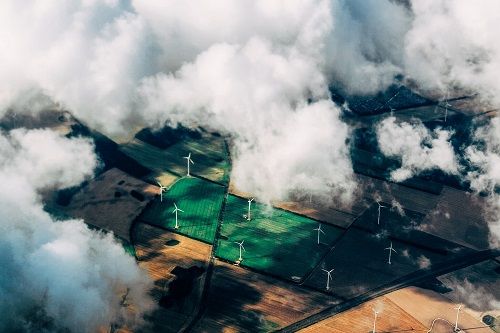Since December last year, electricity producers have had to cede shares of their profits to the grid operators. With this “excess profits tax”, the federal government in Germany wants to counter-finance the subsidies of electricity and gas prices for end consumers. A review of the first two months shows: For aream’s plants, the profit levy was moderate in December, and in January it was even absent. “In the future, the profit tax could take effect again due to higher electricity prices”, says Markus W. Voigt, CEO of the aream Group. Overall, however, the earnings outlook remains good.
The federal government in Germany had decided on price brakes for gas, heat and electricity at the end of 2022. Part of the costs will be financed from profit levies on operators of electricity generation plants. This was justified by the high electricity prices on the spot market, which earned the electricity producers “excess profits”. The scheme is to run until the end of June 2023, but can be extended until 30 April 2024. 90 per cent of the determined extra revenue of plants with a capacity of one megawatt or more will be skimmed off.
“In the case of renewable energy plants, the surplus revenue is basically calculated as the difference between the market price and the EEG subsidy (value to be invested) plus a certain safety margin”, explains Voigt. The market price is defined as the monthly market value according to the EEG. The value to be applied plus a safety margin of three ct/kWh and an amount of six percent of the mean value of the respective energy carrier-specific monthly market value are deducted from this. For renewable energy systems that are not entitled to EEG support (market premium), an amount of ten ct/kWh plus three ct/kWh is applied instead, and an amount of only ten ct/kWh is applied for systems that have received support.
How significantly does this weigh on profits? “In the case of our funds, not particularly strongly so far”, says Voigt. This is shown by the first figures on the absorption of the portfolio projects of the Clean Energy Future Fund for December 2022. 11.65 percent of the total revenue from the sale of electricity was absorbed by one aream wind farm, and over 18 percent by another wind farm. For two own solar parks, on the other hand, there was no skimming off because the monthly market value or the PPA contract value per kWh was below the price threshold above which additional profits are skimmed off.
In the course of a falling gas price, electricity had also become cheaper in January. “There is therefore no profit absorption for our plants for January”, says Voigt, “because the electricity price fell below the threshold again.” For the current year, he says, the price forecasts have been lowered significantly. However, the experts continue to assume a high electricity price level for the next five years. “This leads to higher revenues”, says Voigt. “On the other hand, the profit absorption for the plants outlined above also takes effect.” In view of the lower production and transport costs for modules, however, earnings remain very good despite the absorption.
PRESSEKONTAKT:
Leandra Kiebach
T: +49 (0)211 30 20 60 4-2
E: lk@aream.de
